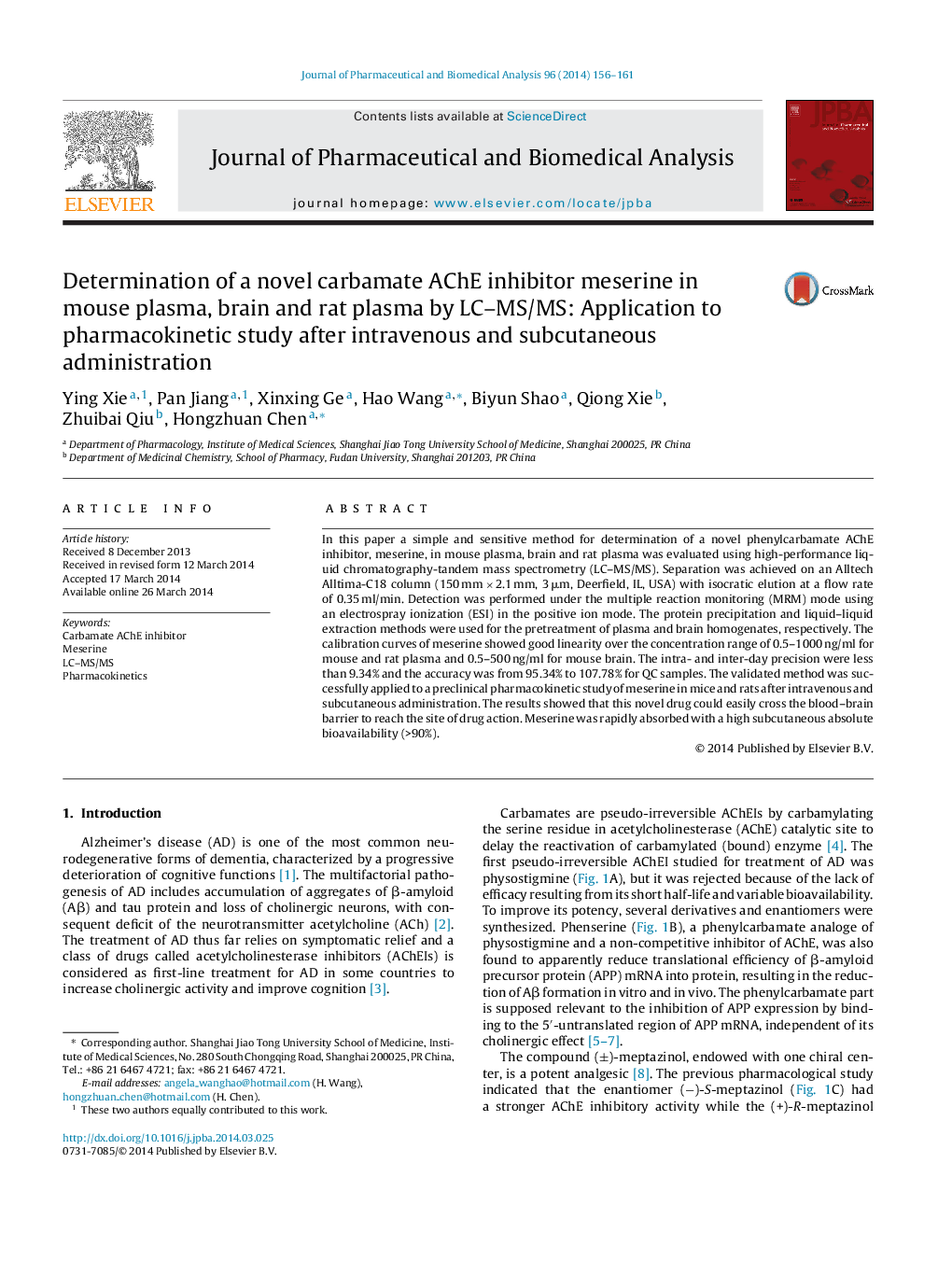| Article ID | Journal | Published Year | Pages | File Type |
|---|---|---|---|---|
| 1221668 | Journal of Pharmaceutical and Biomedical Analysis | 2014 | 6 Pages |
•Meserine was designed and synthesized according to “multitarget-directed ligand” strategy.•The fully preclinical pharmacokinetics in mice and rats were evaluated.•LC–MS/MS combined with protein precipitation and liquid–liquid extraction was applied.•The novel drug could easily cross the blood–brain barrier.
In this paper a simple and sensitive method for determination of a novel phenylcarbamate AChE inhibitor, meserine, in mouse plasma, brain and rat plasma was evaluated using high-performance liquid chromatography-tandem mass spectrometry (LC–MS/MS). Separation was achieved on an Alltech Alltima-C18 column (150 mm × 2.1 mm, 3 μm, Deerfield, IL, USA) with isocratic elution at a flow rate of 0.35 ml/min. Detection was performed under the multiple reaction monitoring (MRM) mode using an electrospray ionization (ESI) in the positive ion mode. The protein precipitation and liquid–liquid extraction methods were used for the pretreatment of plasma and brain homogenates, respectively. The calibration curves of meserine showed good linearity over the concentration range of 0.5–1000 ng/ml for mouse and rat plasma and 0.5–500 ng/ml for mouse brain. The intra- and inter-day precision were less than 9.34% and the accuracy was from 95.34% to 107.78% for QC samples. The validated method was successfully applied to a preclinical pharmacokinetic study of meserine in mice and rats after intravenous and subcutaneous administration. The results showed that this novel drug could easily cross the blood–brain barrier to reach the site of drug action. Meserine was rapidly absorbed with a high subcutaneous absolute bioavailability (>90%).
Graphical abstractFigure optionsDownload full-size imageDownload as PowerPoint slide
